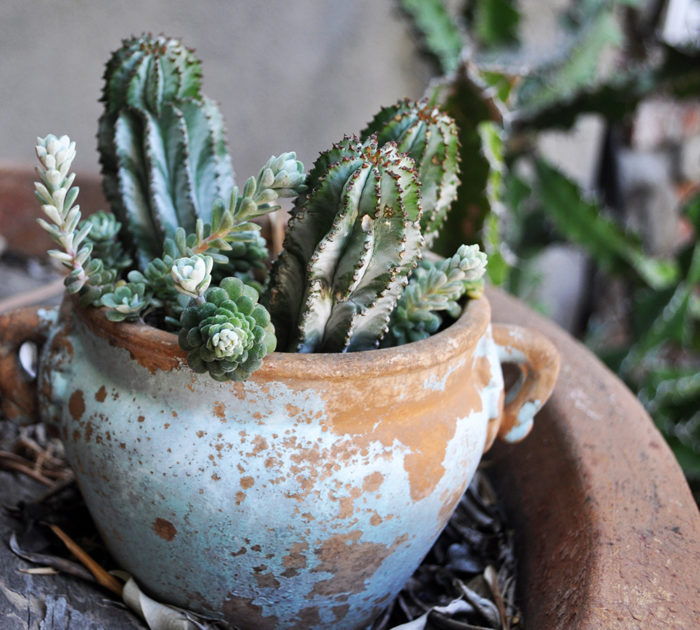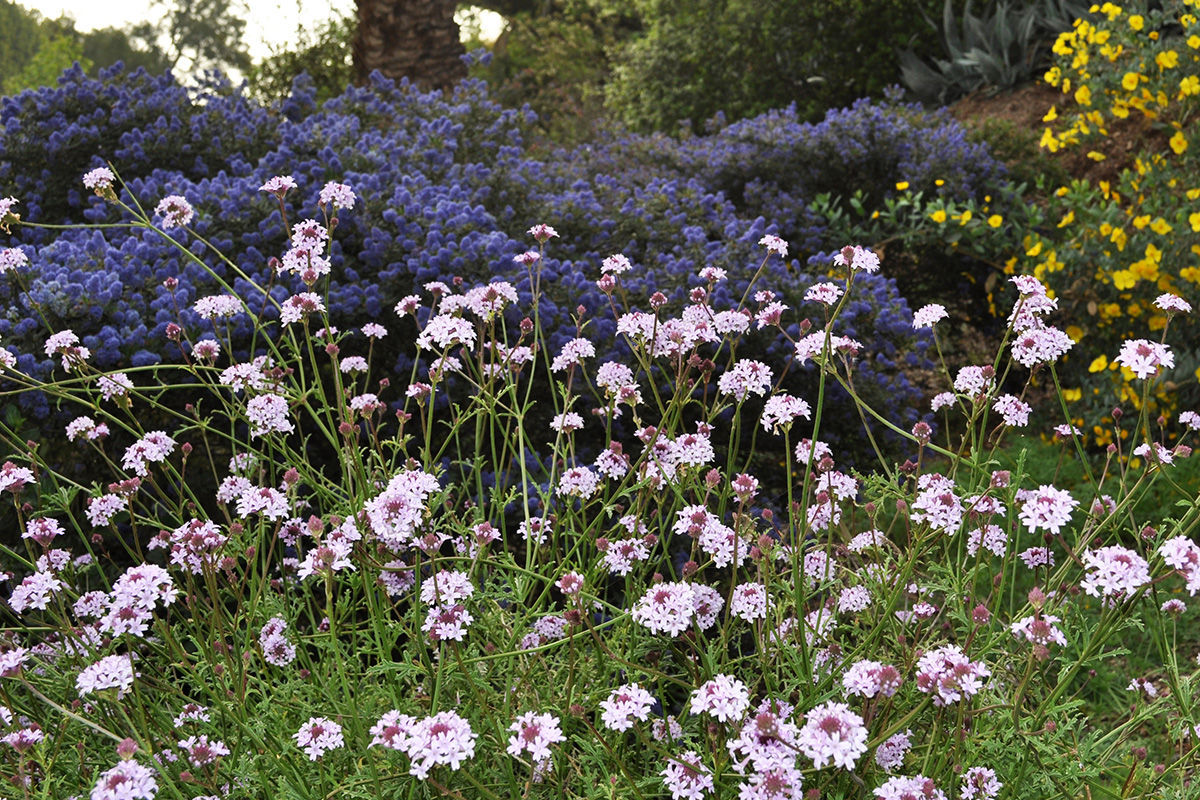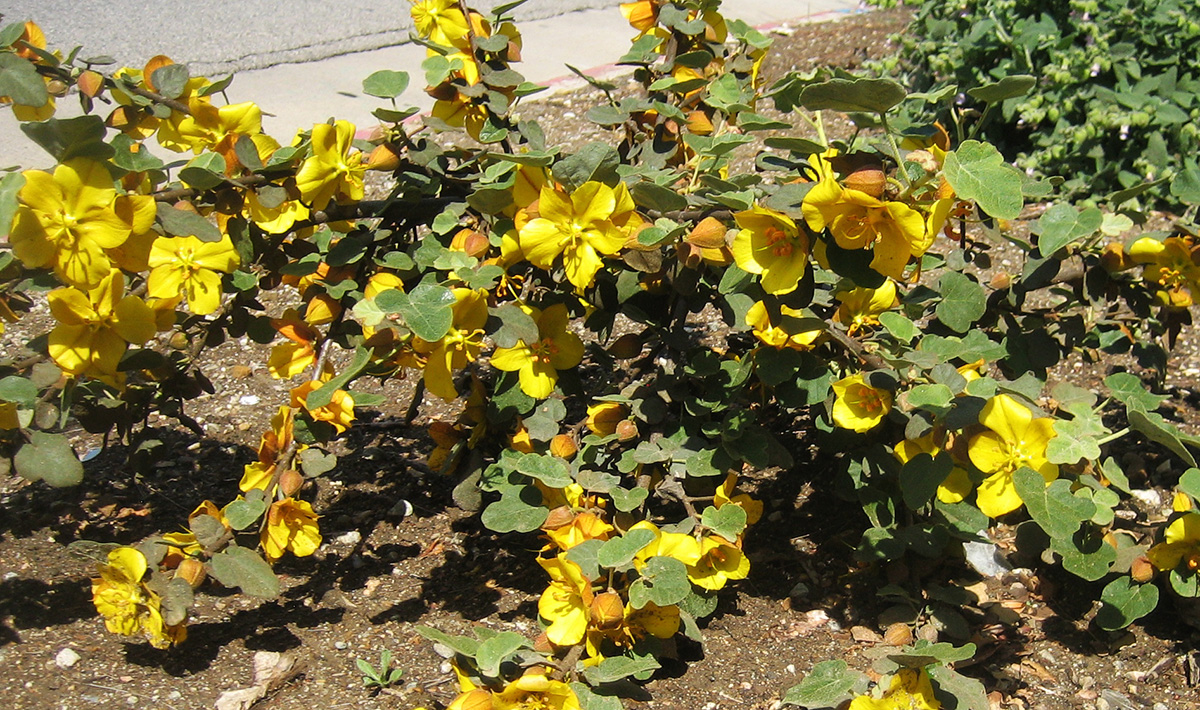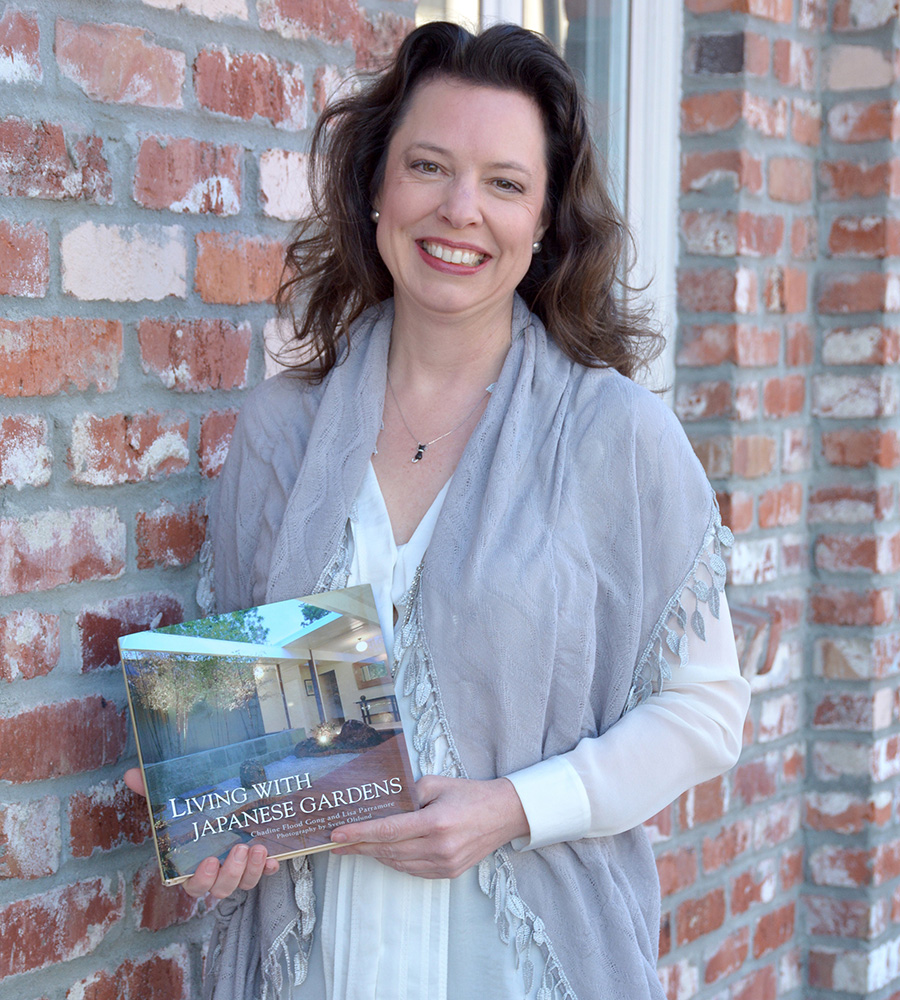
As the summer heat beats upon us, our best game plan is to conserve our energy and spend a bit more time enjoying the garden and a bit less time working. I am not necessarily a morning person, but in midsummer, early morning is my time to weed or do maintenance.

Plan for fall. One of the best things you can do right now? Plan. You may have heard the saying about California natives: “Summer planning, fall planting.” Start making your list of all the plants you would like to purchase this fall. If you have any hard-to-find plants on your list, you can purchase them now if they are available and keep them well-watered in their nursery containers until it is a better time to plant them. Consider some of these stunning natives:
- ‘De La Mina’ Cedros Island verbena (Verbena Iilacina ‘De La Mina’, Zones 7–10)
- ‘Yankee Point’ California lilac (Ceanothus griseus var. horizontalis ‘Yankee Point’, Zones 8–11)
- ‘Concha’ California lilac (Ceanothus ‘Concha’, Zones 7–10)
- Channel Islands tree poppy (Dendromecon harfordii, Zones 9–10)

Order your spring-flowering bulbs. Speaking of planning, it always seems that bulb ordering time sneaks up on me. If that happens to you as well, remember that it is best to refrigerate bulbs eight weeks before planting them. So if you want to plant bulbs in November, you need to get your orders in pronto so that they ship with ample time for refrigeration. Shipping could be a bit delayed right now, so do not delay. Learn about some great fall-planted bulbs for our region here.

Water deeply. Keep an eye on the forecast, and if you see a heat wave coming, water beforehand and water deeply. In our gardens, even the most drought-tolerant plants appreciate some water every few weeks. A few exceptions to this are California flannelbush (Fremontodendron spp. and cvs., Zones 6–10), woolly blue curls (Trichostema lanatum, Zones 8–10), and most native bulbs. These plants do not want any extra summer water, and you will do them more harm than good by thinking otherwise.

Care for container plants. If your pots are not overly large and heavy, consider relocating some to keep them from getting too much direct sun. Succulents, especially, appreciate some shade. Potted plants need to be kept watered much more often in this heat. However, it is mosquito season, so be diligent about not allowing water to collect in saucers. I prefer to keep my pots on feet rather than on top of saucers for just this reason.

Catch up on your reading. What better activity on a hot day than to curl up in a shady spot with a good book? I recently had the good fortune to watch a webinar by Lisa Parramore, APLD, in which she was discussing Living with Japanese Gardens, which she wrote with Chadine Flood Gong. Just the mere thought of a Japanese garden evokes feelings of cool and calm. A Japanese-themed garden can be recreated anywhere, as it is more important to focus on principles than on exact species of plants. If it is not possible to travel to Japan right now, this can be your next best thing. Learn more about elements of Japanese gardens here.
—Francesca Corra, APLD, is a nationally certified landscape designer and owner of Dirt Diva Designs in Studio City, California.


















Comments
Log in or create an account to post a comment.
Sign up Log in